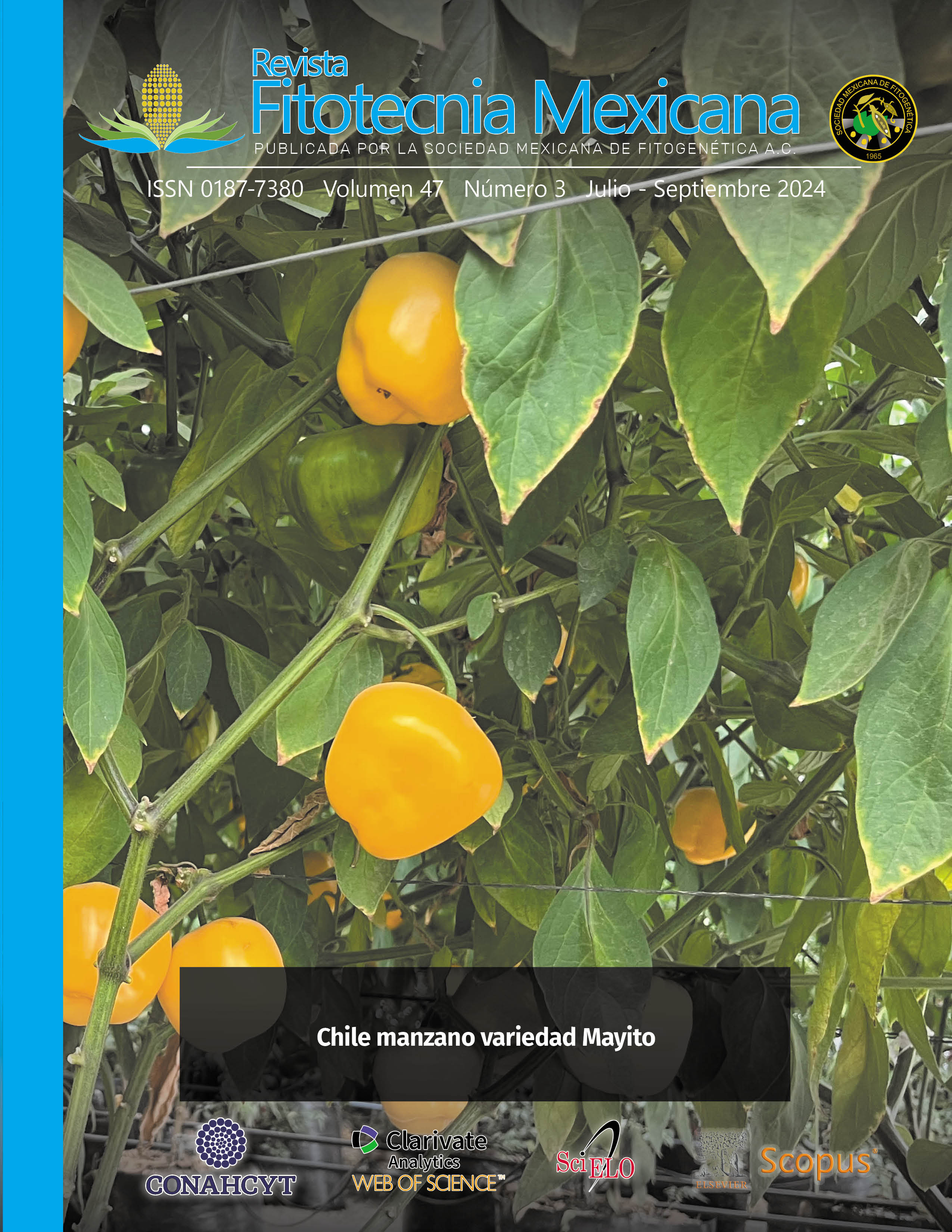DIRECT SHOOT ORGANOGENESIS FROM in vitro GERMINATED SEEDLINGS OF Rhyncholaelia glauca (LINDLEY) SCHLECHTER
Main Article Content
Abstract
Rhyncholaelia glauca (Lindley) Schlechter, included in the CITES (Convention on International Trade in Endangered Species of Wild Fauna and Flora) is a Mexican epiphytic orchid of extraordinary floricultural and genetic potential. In vitro plant tissue culture techniques provide a viable alternative for the preservation and large-scale multiplication of endangered species. The objective of this research was to establish a protocol for the induction of direct organogenesis of shoots from seedlings germinated in vitro. The process started with germination of seeds from a mature, closed capsule. Organogenesis was evaluated in 100 % MS medium with 6-benzyladenine (BA, 1.0-3.0 mg L-1) and 1-naphthaleneacetic acid (NAA, 0.25 and 0.5 mg L-1) with activated charcoal (1.0 g L-1). In multiplication, shoots (1.5-2 cm) were grown on MS medium (50 and 100 %) with BA (2.0-3.0 mg L-1) and NAA or indoleacetic acid (IAA, 0.5 mg L-1) with activated charcoal (0.5 g L-1). In elongation, groups of shoots were placed in MS medium (50 and 100 %) with or without activated charcoal (0.5 g L-1). The assays were placed in a completely randomized experimental design and analysis of variance was used to analyze the data. The highest percentage of germination (90.48 %) was obtained with MS medium 50 % without growth regulators. The highest number of shoots in induction (2.48) and multiplication (3.10) was achieved with 2.5 mg L-1 of BA combined with 0.5 mg L-1 of NAA and 3.0 mg L-1 of BA combined with 0.5 mg L-1 of IAA, respectively. The longest shoot length was 1.2 cm on MS medium 50 % added with 0.5 g L-1 of activated charcoal. The knowledge generated in this research offers an alternative of propagation for sustainable use of Rhyncholaelia glauca to counteract its vulnerability status.

